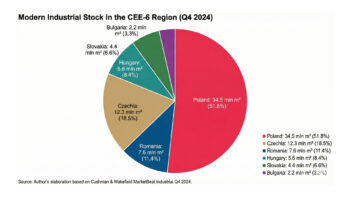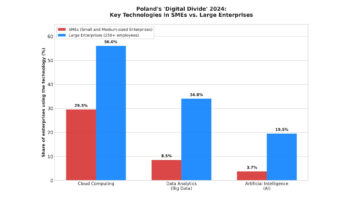Today, few technological solutions from the 1980s can boast growing popularity. Magnetic tape – often considered a relic of the past – has not only survived, but has seen a 15 per cent increase in shipment volume, reaching 176.5 exabytes in 2024. And while it’s hard to find it at AI startup presentations, it still holds an important place in many data centres.
Persistence of the myth of “obsolete technology”
For decades, tape has functioned in the collective consciousness as a declining technology – slow, cumbersome, physically demanding. Compared to direct-access storage (SSD, NVMe, HDD) or cloud solutions, its limitations are obvious: access times in seconds or minutes, linear read and write, lack of flexibility. But tape was never meant to compete with operating media. Its strength has always been elsewhere – in longevity, cost and security.
Why does tape still pay off?
From an IT infrastructure management point of view, tape’s biggest advantage remains the incomparably low cost of data storage. At large scale – tens or hundreds of petabytes – the difference in unit cost between tape and SSD can be up to an order of magnitude. What’s more, data stored on tape requires no power or cooling, resulting in lower power consumption and real operational savings.
Tape also wins in terms of data longevity. Well-stored LTO cartridges can maintain data integrity for 30 years or more, without the risk of mechanical wear and tear that occurs with spinning disks. This makes them an attractive option for storing regulatory archives, multimedia material or historical research data.
Finally, security. Tape cartridges can be physically separated from the network, virtually eliminating the risk of them being encrypted by ransomware. At a time when cyber threats are affecting even the best-secured production environments, this level of ‘air gap’ is a significant asset.
Where is the tape used?
While it is difficult to imagine tape being used to support real-time applications, there are still many use cases where it performs brilliantly. The most obvious example is ‘cold data’ – rarely read collections that nevertheless cannot be deleted: backups, archive data, financial records, medical images, scientific collections.
The public sector, large research institutions, the media industry and some companies in the industrial sector all operate on huge data sets that need to be stored for decades. In such cases, the cost and energy intensity of the public cloud prove uneconomic. Hence the decision to retain tape as a permanent archive layer.
It is worth noting that many modern data centres today operate in a*tiered model. The most frequently used data is stored in high-speed SSD or NVMe storage, active data – on classic HDDs, and archive data – just on tapes. This allows for both cost and operational optimisation of the entire IT environment.
LTO technology: evolution without revolution
Tape development has not stood still. The LTO (Linear Tape-Open) standard, developed by IBM, HPE and Quantum, has undergone significant evolution in recent years. The latest generation – LTO 10 – offers 36TB of capacity per cartridge, double that of the previous version. The standard also provides backward compatibility (read to two generations back and write to one), making it easy to migrate data without having to replace the entire infrastructure.
The roadmap to LTO 14, which is expected to offer up to 576 TB per tape, is already on the horizon. Although the pace of development remains moderate (a new generation every three to four years), the trend is clear – tape is growing in capacity and continues to meet growing demand.
Will the tape survive for decades to come?
The demand for long-term information storage is not diminishing. On the contrary, storage systems are being forced to process and archive data at a rate that seemed unattainable just a few years ago.
Tape can be a very effective component of current and future data architectures. As long as there is a demand for low-cost, durable and secure information storage, tape will continue to play its niche but vital role in the data centre ecosystem.












